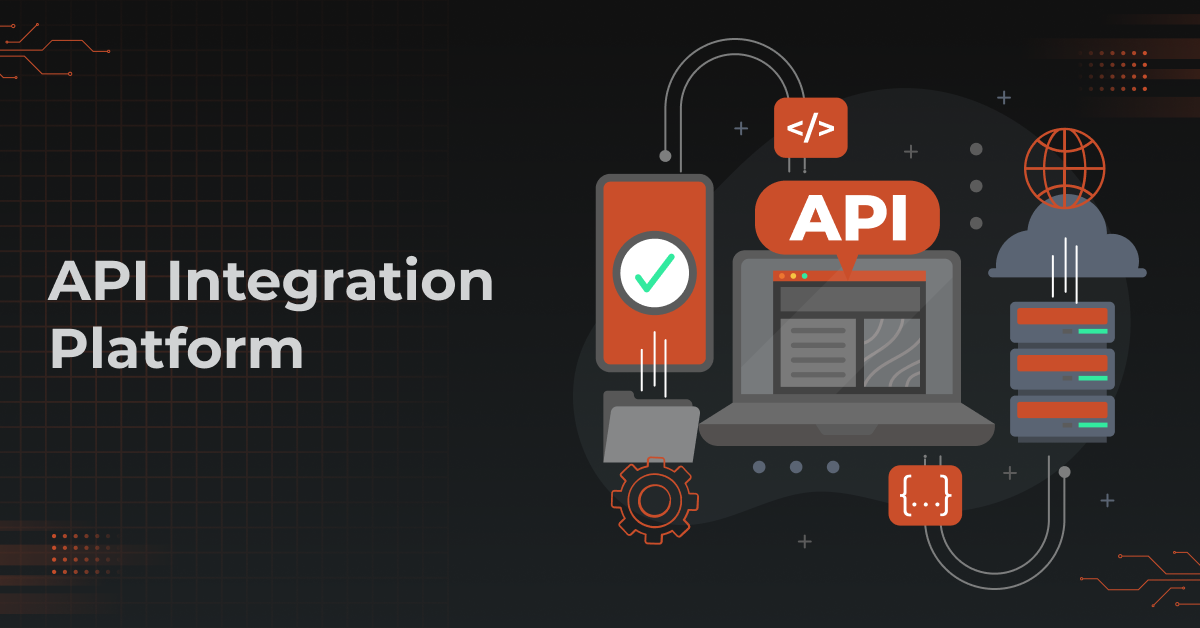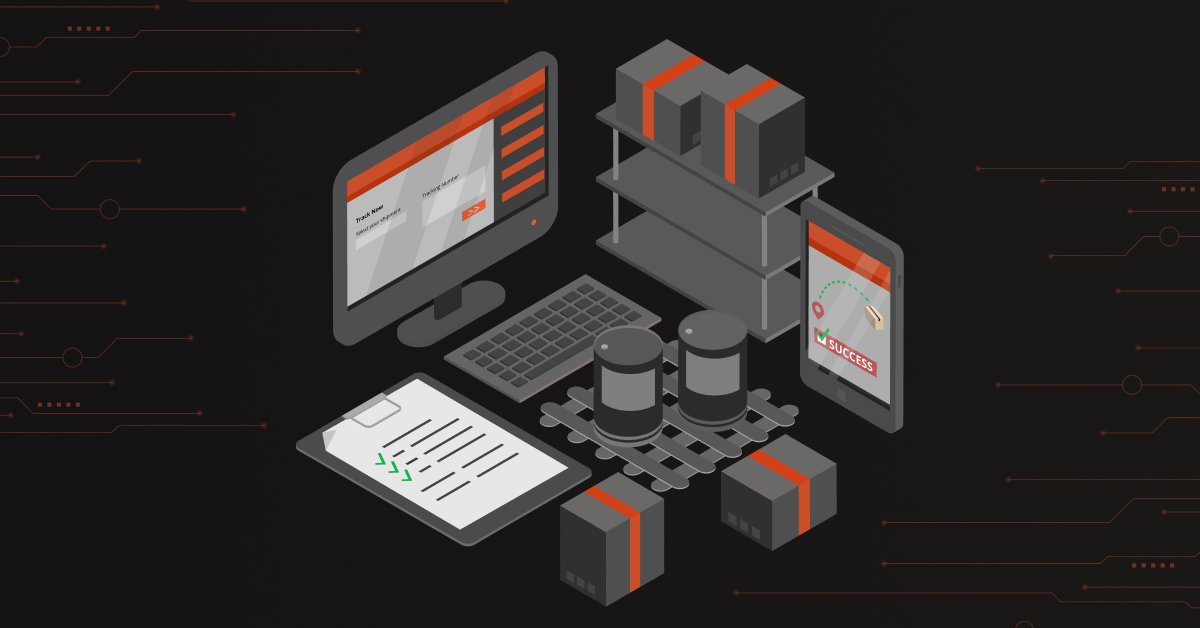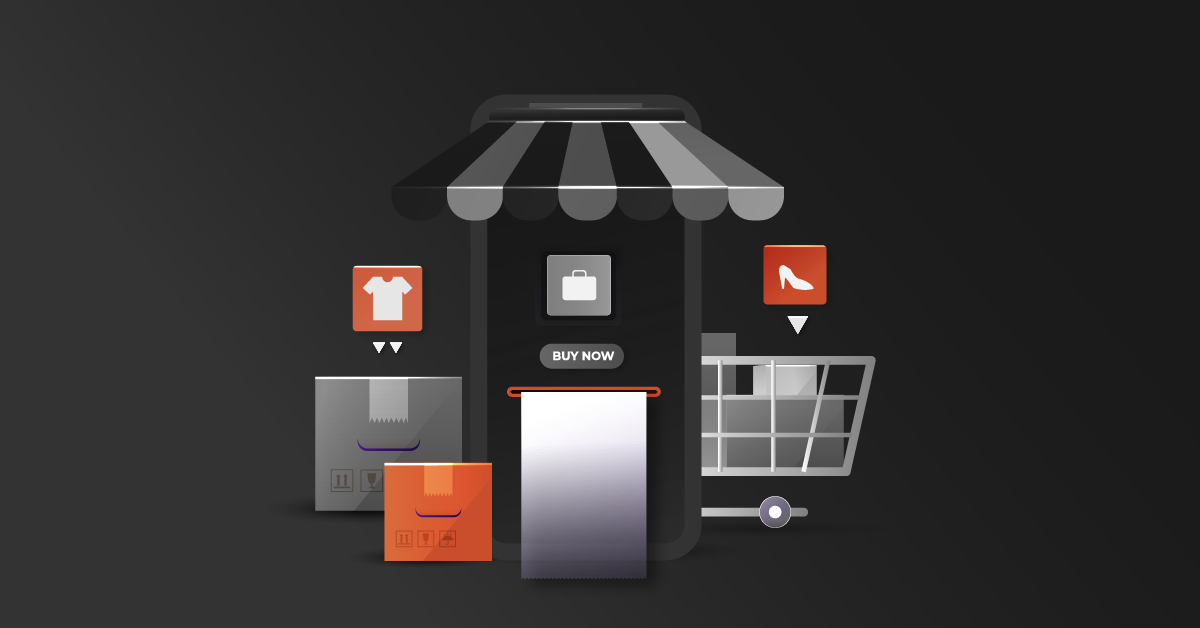API integration is the method of connecting different software systems through Application Programming Interfaces (APIs) to enable smooth communication and data exchange.
An API integration platform acts as a central hub, playing a vital role in facilitating this seamless interaction among various software applications.
Contents
Top 10 API Integration Platforms
Here are the top API integration management platforms:
1. DCKAP Integrator
DCKAP Integrator is a cloud integration platform designed to empower distributors by efficiently managing data flow across diverse applications, including ERP, CRM, ecommerce platforms, EDI, databases, PIM, and various marketing tools. This cloud-based iPaaS solution supports seamless integrations, real-time data synchronization, and ensures data integrity for optimal operational efficiency.
Features and Benefits
- Hybrid Integration
- Low-code and Ease of Use
- Versatile and Simple Interface
- Pre-built Connectors and Advanced Mapping
- Transaction Logging and Visibility
- Custom APIs for System Integration
- Secure Data Storage on AWS Cloud
- Swift Implementation and Customer Support
- Cost-effectiveness and Niche Affordability
Cons
- Limited Customization Options
- Repetitive System Code
Pricing
- Transparent and flexible pricing plans.
- Standard, Professional, and Enterprise plans based on features, integration complexity, number of users, customer support levels, and more.
- No hidden charges post-implementation or renewals
2. MuleSoft
MuleSoft Anypoint Platform is an integrated iPaaS solution that unifies API management, integration, and automation through an API-led connectivity approach. This platform seamlessly connects various applications, systems, and data warehouses, accommodating deployment in both on-premise and cloud environments. Following its 2018 acquisition by Salesforce, MuleSoft became an integral component of Salesforce Integration Cloud.
Features and Benefits
- Universal Deployment
- Pre-built APIs and Connectors
- Custom Integrations with Mule SDK
- Unified API Management
- Advanced Data Transformation with DataWeave
- Support Tools and Community
- Robust security standards.
Cons
- Limited debugging tools
- High licensing and renewal costs
- Steep learning curve, especially for non-technical business users
- Issues with real-time updates in Anypoint Runtime Fabric
- Lack of mobile applications and offline access
- Complex setup for access management in large enterprises
- Inability for multiple users to edit the same API spec simultaneously, leading to potential time constraints
- Challenges in fetching metadata from the database, complicating the mapping process.
Pricing
- MuleSoft’s pricing is based on API management and integration capabilities.
- Offers a three-tier pricing model: Gold, Platinum, and Titanium.
- Licensing fees and plans can be costly, particularly for smaller businesses, as MuleSoft is primarily tailored for large enterprises.
Also read: MuleSoft vs Dell Boomi: Differences + Market-Leading Solution for Distributors
3. Dell Boomi
Dell Boomi’s AtomSphere is a comprehensive iPaaS (Integration Platform as a Service) providing end-to-end solutions for application and data integration. As a cloud integration leader, Boomi AtomSphere brings together workflow automation, B2B management, API design and management, data readiness, and application development. This cloud-native integration platform, operating on a single-instance, multi-tenant model, ensures automatic upgrades and scalability.
Features and Benefits
- Hybrid Integration
- Master Data Management
- API Management
- EDI Management
- User-friendly Interface
- Pre-Built Connectors and Reusability
- Security and Compliance
Cons
- Potentially expensive for small companies.
- Error messages may be misleading, and error handling can pose challenges.
- Limited capabilities when managing it via API.
- Debugging can be challenging, with precise process execution metrics not always visible.
- Frequent feature updates, while welcomed, may be overwhelming for some users to learn and implement.
- Challenges with API configuration controls.
Pricing
- Flexible pricing structure catering to SMBs and Enterprise-grade iPaaS.
- Offers Professional, ProPlus, Enterprise, and Enterprise Plus plans based on various functionalities.
- Provides a 30-day free trial period.
4. IBM App Connect
IBM App Connect is a Software as a Service (SaaS) integration solution designed to seamlessly connect data and applications. Fully managed on AWS, it provides deployment flexibility, allowing deployment on-premises, in the cloud, or as a Service (aaS).
IBM App Connect incorporates intelligent mapping recommendations to transform complex data and allows users to create custom connectors using the Connector Development Kit (CDK). Additionally, IBM API Connect empowers business users to create, manage, secure, socialize, and monetize APIs across various environments throughout their lifecycle, also being fully managed on AWS.
Features and Benefits
- No-Code UI and Drag-and-Drop Workflows
- Pre-Built Connectors and Templates
- AI-Based Features
- Automated CI/CD Pipelines
- Developer Toolkit
- Centralized Dashboard and Management Tools
Cons
- Learning Curve
- Integration Complexity
- Limited Built-In Connectors
- Documentation Challenges
- Delays in Support Response Times
Pricing
- Options available for Integration Platform as a Service (iPaaS), starting at USD 667/month.
- Enterprise Integration Software pricing is available on request.
Also read: Decoding API Integration [with Types, Use Cases & FAQs]
5. Zapier
Zapier is a user-friendly API integration platform designed to facilitate a wide range of app integrations through an intuitive and visually oriented interface. The platform aims to empower users without technical expertise by providing accessible tools for automating complex workflows effortlessly.
Features and Benefits
- Intuitive Interface
- User-Friendly Automation
- Visual Workflow Creation
- Simplicity and Ease of Use
Cons
- Custom and complex integrations
- Difficulty in understanding error codes.
- Potential high costs for small businesses or entrepreneurs.
- Variation in integration depth for different applications, limiting automation capabilities.
- Challenges in making changes to workflows or automated processes.
- Some integrations may fail without providing sufficient information.
Pricing
- Tiered pricing plan
- Free version available.
- Basic plan starts at USD 19.9/month.
- Offers a 14-day free trial for users to explore its features.
6. Talend
Talend Data Fabric is a low-code platform designed to unify various aspects of data management, including data integration, application and API integration, data quality, data integrity and governance, and API development. This versatile solution operates independently of cloud platforms and supports multiple deployment architectures, catering to end-to-end data management requirements across organizations.
Features and Benefits
- Comprehensive Data and API Lifecycle Support
- Flexible Deployment Options
- ELT/ETL and Change Data Capture (CDC) Tools.
- Reusable Assets
- Versatile Integration Patterns
- Technology Partnerships and Integrations
Cons
- Occasional Performance Lag
- Inadequate Unit Testing Support
- Unclear Error Handling
- Limited Machine Learning Components
- Customer Support Delays
Pricing
Talend offers several plans tailored to meet business needs:
- Stitch
- Data Management Platform
- Big Data Platform
- Big Data
7. Jitterbit
Jitterbit’s Harmony is a cloud-native integration and application development platform, employing a low-code approach to facilitate seamless integration across hybrid environments encompassing SaaS, legacy systems, and on-premises applications. The platform supports full API lifecycle management, empowering businesses to automate workflows, develop new applications, and streamline business processes.
Features and Benefits
- User-Friendly Visual Interface
- Low-Code Application Builder
- Developer-Friendly API Platform
- Hybrid Environment Support
- Reusable Pre-Built Integration Assets
- Centralized Dashboard
- Compliance with Security Standards
- Device Compatibility
- Dedicated Customer Success Manager
Cons
- Steep learning curve and challenging initial onboarding for some users.
- Potential high costs, which may be a concern for some businesses.
- Comprehensive features that can be overwhelming for certain business users.
- Limited logging functionality, lacking rich text options and other formats for effective integration review post-runtime.
- Advanced transformation possibilities may be challenging and require extensive user effort.
- Version control issues, as options to retain revisions of any object are missing.
Pricing
- Three-tier pricing structure: Standard, Professional, and Enterprise plans.
- Pricing based on features, connectivity, API platform, and support and training.
- Enterprise license agreements (ELA) are also available.
Also read: Jitterbit vs Dell Boomi: Is There Something Better?
8. Integrate.io
Integrate.io is a robust platform that addresses all your API integration needs. The powerful Integrate.io API offers functionalities to control and monitor Integrate.io clusters and jobs. Users can leverage the Integrate.io API while working on the platform to create clusters, execute jobs, track job progress, and terminate running jobs or clusters.
Features and Benefits
- Low-code ETL and Reverse ETL
- Change Data Capture (CDC) and ELT
- Automated API generation
- Complete Customization,
- Flexible Authentication
- Advanced Data Mesh Capabilities.
Cons
- Unclear Error Messages
- Steep Learning Curve for Non-Developers
- Connectivity Issues
Pricing
Integrate.io is categorized into three tiers:
- Enterprise: Suitable for advanced security, support, and feature requirements.
- Professional: Tailored for heavier security and support needs.
- Starter: Geared towards basic ETL requirements
9. Cleo Integration Cloud
Cleo Integration Cloud (CIC) is a cloud-based integration platform designed for the creation, management, optimization, and automation of end-to-end business workflows. It specializes in connecting and integrating partners, SaaS, and legacy systems to facilitate seamless B2B integration across the enterprise. CIC supports a range of integration types, including API-based, EDI, and non-EDI, automating and orchestrating transactions to eliminate manual integration processes.
Features and Benefits
- Data Streamlining
- End-to-End Visibility for API and EDI-based integrations
- Data Mapping and Transformation
- Partner Onboarding Support
- Comprehensive Connector Library
- Self-Service Integration Design
- Security Compliance
- Training and Events
Cons
- Learning Curve for Complex Transformations
- Platform is on the Costlier Side
- Performance Concerns Such as Bugs, Glitches, and Connectivity Issues.
- The Reporting Feature Lacks the Desired Level of Development and Refinement.
Pricing
- Flexible packages: Express, Essentials, Business, and Premium.
- Pricing based on features, connections, platform service options, connectivity, and integration.
10. SnapLogic
SnapLogic Intelligent Integration Platform is a low-code/no-code Integration Platform as a Service (iPaaS) that facilitates application and data integrations. It includes API management functionality to create, manage, and secure APIs at scale. The platform provides pre-built connectors (Snaps) and templates for common business processes, supporting visual ETL and ELT processes for data delivery to data lakes and cloud data warehouses. The Iris AI feature accelerates pipeline design by recommending accurate integrations.
Features and Benefits
- High Throughput Real-Time Processing
- Active customer service
- AI-Powered Integration Assistant
- Comprehensive Platform Components
- Pre-Built Snaps and SDK
Cons
- Learning Curve for Complex Transformations
- Costly Option for Many Small and Medium-sized Enterprises (SMEs).
- AWS Setting Integration Issues
- Data Parallel Processing Difficulty
- Performance Issues with High Data Volume
- Lack of GitHub Integration
- Scaling for Enterprise Can be Costly.
Pricing
- Pricing is available on request.
- Offers a 30-day free trial for users to explore the platform’s capabilities.
Also read: Adobe API Mesh Explained [+ Key Features & Steps]
How to Choose the Right API Integration Platform
Choosing the right API integration platform is a must to ensure seamless connectivity and efficient data exchange in your business ecosystem. Here’s a guide to help you make an informed decision:
Define Integration Goals
Clearly outline your integration objectives. Identify the specific tasks, workflows, or data exchanges you want to achieve. Understanding your goals will help you in selecting a platform that matches your business needs.
Consider Ease of Use
Opt for a platform with a user-friendly interface. A solution that allows both technical and non-technical users to work efficiently ensures smoother adoption and reduces the learning curve.
Scalability
Choose a platform that scales with your business growth. Consider your current needs and check whether the platform can accommodate increasing data volumes, users, and additional integrations as your business expands.
Flexibility and Customization
Look for a platform that offers flexibility and customization options. Your integration requirements may evolve, so having a solution that adapts to changing needs without significant reconfiguration is essential.
Compatibility with Existing Systems
Ensure the platform is compatible with your existing software and systems. Seamless integration with your current tech stack minimizes disruptions and facilitates a more cohesive ecosystem.
Security Measures
Prioritize data security. The chosen platform should comply with industry standards and regulations. Features like encryption, access controls, and regular security updates are essential for safeguarding sensitive information.
Performance and Reliability
Evaluate the platform’s performance and reliability. Check for features like real-time monitoring, error handling, and recovery mechanisms to ensure uninterrupted operation even in the face of unexpected issues.
Cost Considerations
Understand the pricing structure and choose a platform that aligns with your budget. Consider not only the upfront costs but also any potential scalability costs as your integration needs grow.
Support and Documentation
Consider the level of support and documentation provided by the platform. A responsive support team and comprehensive documentation can be invaluable, especially during implementation and troubleshooting.
Community and Reviews
Explore user communities and reviews. Insights from other businesses using the platform can provide valuable perspectives on its strengths, weaknesses, and overall performance.
Trial Period
If available, take advantage of free trials offered by API integration solutions. Testing the platform in your real-world scenarios allows you to assess its suitability for your specific requirements.
Why Do You Need an API Integration Platform?
Here are a few compelling reasons on why you need an API Integration solution:
- API integration tools provide a single platform for managing API integrations, saving time and effort for users.
- These platforms simplify the integration process, especially beneficial for non-technical users unfamiliar with manual API connections.
- Businesses can swiftly connect multiple systems without grappling with the technical complexities of integration using API integration platforms.
- API integration platforms offer tools like data mapping, workflow automation, error handling, and security protocols, enhancing the functionality of integrations.
- By utilizing these platforms, businesses can ensure that their integrations are robust, reliable, and secure, crucial in an era where data breaches and cyber-attacks are prevalent.
- API integration platforms enables robotic process automation, reducing manual data entry, eliminating duplicates, and streamlining operations for improved efficiency.
- Businesses can save time and resources by using API integration platforms to automate tasks, contributing to overall operational efficiency.
- Integration of multiple systems reduces time-consuming tasks, and enhances agility, allowing businesses to become more responsive to changing market conditions in today’s fast-paced business environment.
Overall, the use of an API integration platform offers businesses substantial benefits, including improved efficiency, enhanced functionality, and increased security.
The Best Choice for Distributors – DCKAP Integrator
DCKAP Integrator is the optimal choice as it caters to the specific needs of distributors, offering a versatile and user-friendly solution. As businesses navigate the complexities of ERP, ecommerce, and data integration, DCKAP Integrator serves as a reliable ally, facilitating digital transformation, and empowering organizations to achieve their integration goals with confidence.
Interested to know more about DCKAP Integrator? Get a closer look at our product with a simple click to the interactive tour!
FAQS
What is API integration?
In simple terms, API Integration refers to the process of connecting and coordinating different software systems through Application Programming Interfaces (APIs). It allows seamless communication and data exchange between various systems, enabling them to work together cohesively.
What is the importance of API integration platforms?
API Integration is crucial as it enables companies to connect and synchronize different software applications, leading to improved operational efficiency, streamlined workflows, and enhanced collaboration. It plays a key role in digital transformation by allowing organizations to leverage the functionalities of diverse business apps.
What are some common issues in API integration?
Common issues in API integration include dealing with varying data formats, managing data silos, ensuring data quality, handling large data volumes, different data sources, addressing delays in data delivery, and addressing data security concerns. API integration platforms often offer solutions to mitigate these challenges.
How to overcome challenges in API integration?
Challenges in API integration can be overcome by using API integration platforms that offer solutions such as data mapping and transformation, workflow automation, error handling, and security protocols. Careful planning, adherence to best practices, and consideration of compatibility and scalability are also essential.
How can API integration enhance the customer experience for modern businesses?
API integration transforms the customer experience by enabling seamless connections between different software systems. This results in real-time data exchange, allowing businesses to access and utilize customer data instantly. Through personalized interactions, quicker query resolutions, and streamlined services, API Integration contributes to improved customer satisfaction and loyalty in the modern business landscape.
What distinguishes REST APIs from other types of APIs?
REST APIs, or Representational State Transfer APIs, prioritize simplicity and statelessness. They utilize standard HTTP methods, such as GET, POST, PUT, and DELETE, and often communicate in lightweight formats like JSON. This differs from SOAP APIs, which use XML and can operate over various protocols.
What are some alternative API integration platforms?
Alternative API Integration platforms include Informatica Intelligent Cloud Services, Oracle API Platform, Microsoft Azure. and Each platform offers unique features, such as low-code development, cloud-based solutions, and specialized integration capabilities, catering to diverse business needs.
What are the benefits of API integration tools?
API Integration tools offer several advantages, including streamlined data flow between applications, enhanced operational efficiency, automation of workflows, improved connectivity, and the ability to create integrated ecosystems. These tools simplify complex integration processes and empower businesses to adapt quickly to changing technological landscapes.
How can businesses ensure successful API integration?
Successful API Integration involves thorough planning, compatibility checks, security considerations, adherence to best practices, and scalability planning. It is essential to choose the right API Integration platform, define clear integration goals, and monitor performance regularly. Robust testing and continuous evaluation contribute to the success of API Integration initiatives.
What are some specific use cases of API integration solutions?
API Integration solutions cater to various use cases, such as ERP integration for seamless business processes, CRM integration for enhanced customer relationship management, social media integration for broader reach, and ecommerce integration for a unified shopping experience. These solutions also find applications in data synchronization, IoT (Internet of Things) connectivity, and more.
Can you provide examples of APIs used in the industry?
Examples of APIs include payment gateways like Stripe, social media APIs like Facebook Graph API, mapping APIs like Google Maps API, and communication APIs like Twilio. These APIs enable developers to leverage existing functionalities and integrate them into their applications, enhancing overall user experiences.
How do API Integration platforms handle legacy systems?
API Integration platforms are designed to bridge the gap between modern and legacy systems. They often support various protocols and different data types, allowing seamless communication between old and new systems. By offering compatibility layers and transformation capabilities, API Integration platforms enable businesses to modernize and extend the lifespan of their legacy systems.




